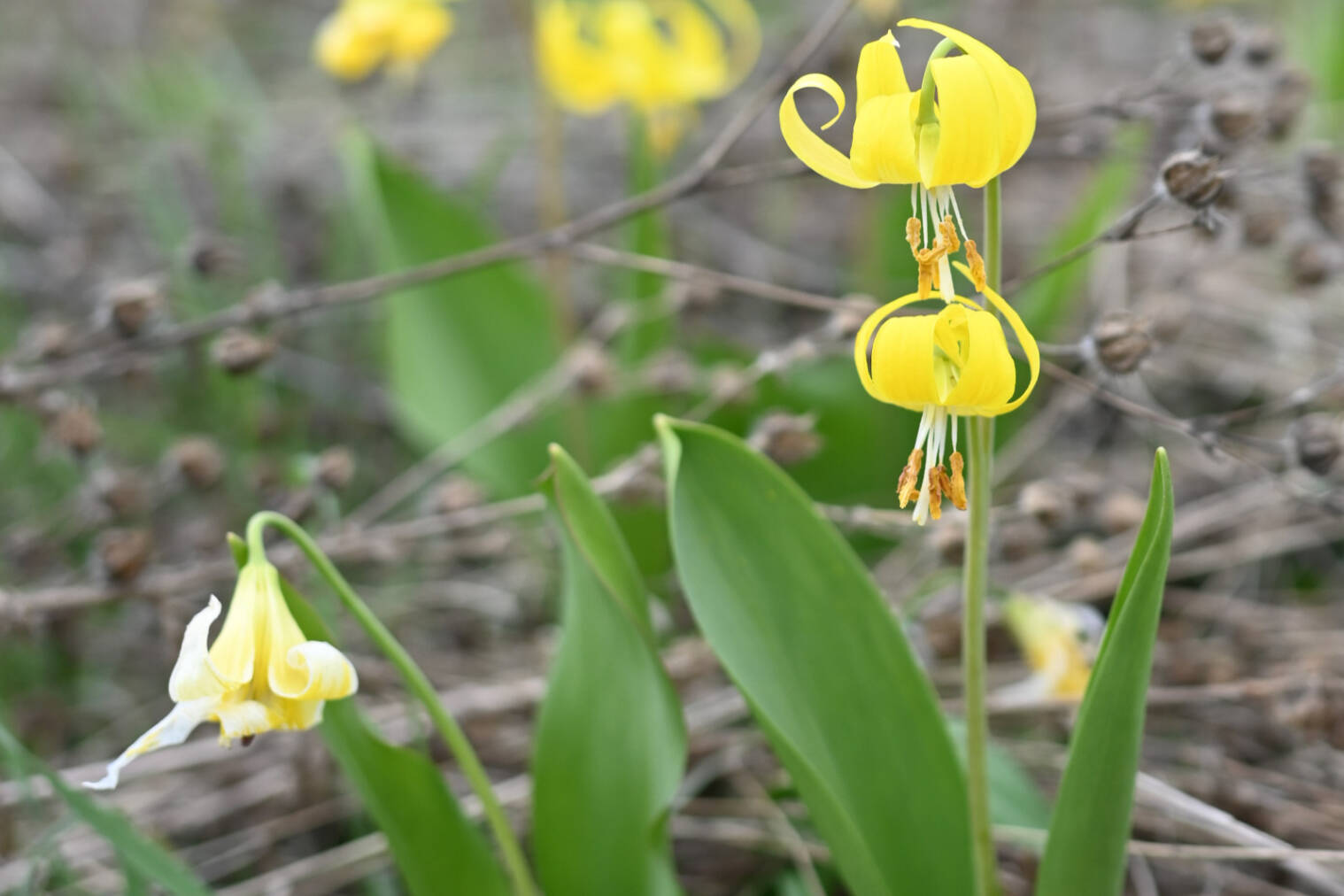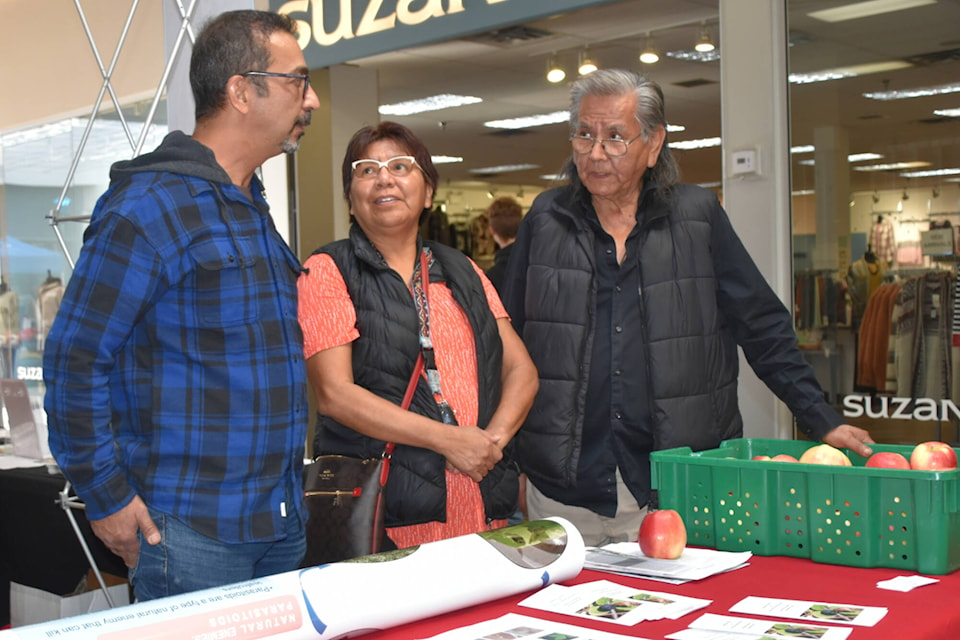Secwépemc Knowledge Keeper Louis Thomas remembers going with his grandmother and mother to get food.
They didn’t go to a grocery store or restaurant. They headed out to pick avalanche lilies.
Unfortunately, the task was much less productive than it once was. The women would complain about how difficult it had become; sometimes it could take half a day just to get enough for one meal. The soil was so hard.
“Way back in time they’d be harvesting it all the time. So it was more manageable way back then because they were out there tilling the soil all the time,” Thomas explained.
“We need to look at how do we get our people back on the land. Getting back to the land and harvesting like we used to. It sustained our people for thousands of years. Why can’t it sustain us for another few more years? Now you look at the food shortage, the price of food going up, so why can’t we get back to our traditional foods again. And start living healthier again. Getting back on the land and being a part of it again.”
Progress is being made on that goal.
In 2019, Mehdi Sharifi, a research scientist in Summerland with the science and technology branch of Agriculture and Agri-Food Canada, began reaching out to Indigenous communities in B.C. to learn about their food systems.
A former professor at Trent University, he had done similar work in Ontario.
In 2017 he organized a workshop that drew people from across the country and resulted in federal funding for work with Indigenous communities and native plants.
He was introduced to Thomas by Libby Chisholm who works with the band, and found “what Louis was doing and hoping to do, was exactly what we were hoping to do,” Sharifi said.
The first was to establish a relationship with Agriculture Canada and then to reach out to the community and discuss some of the interests in the community.
“We had the expertise working with food as that was our job, and many of our skills were transferable. So we support the communities working on plants,” Sharifi said.
Thomas told them about his interest in avalanche lilies.

“It was a staple food in Interior B.C. Each family would harvest up to 90 pounds and keep it for winter. They dried different things; the plants were high in starch,” said Sharifi.
He said so many sites had been ruined by factors such as: climate change; forestry; invasive species, pests and diseases; and blocked access for communities. The plan is to start repopulating some of the sites.
“We’re working in that direction, not super fast,” Sharifi said.
Along with Neskonlith, he has also been working with the Westbank First Nation and the Seabird Island First Nation.
He said there are sites near Chase and in Mount Revelstoke National Park.
Thomas was interested in spring beauty or mountain potatoes as well as avalanche lilies, but focus had to be narrowed to the lilies because of the amount of work involved.
Over three years, for four to six weeks, data would be collected about twice a week at the Chase and Revelstoke sites. The plan has also included hiring Indigenous students to take part in the work. More are welcome.
“We can hire the students, the science is interesting,” Shafiri said.
Shafiri has also been working with a research team which included scientists from Summerland, Agassiz, Newfoundland and Ottawa. Other Neskonlith members who have supported the project over time have also been appreciated. Several staff and students have helped manage the sites and collect data.
Read more:
Thomas said he listened to the elders from the past, “the ones that experienced a lot of our old ways… I listened to them and that’s where the idea came when Libby was working for us on a school project.
“We started looking at ways of getting back our traditional plants again.”
Along with working with Ag Canada, he’s also been working with Parks Canada.
“And they gave us a harvest area up there (in Mount Revelstoke park). We have to develop that up there too…”
“It’s a lot healthier going up and digging for your own food. You’re out on the land, you spend a week harvesting. I want to develop harvest areas between here and Revelstoke. That’s one of my ultimate goals.”
Sharifi expressed his appreciation for colleagues at Parks Canada who have been supporters too.
A garden with traditional Indigenous plants was also planted on Neskonlith land. It included the high bush cranberry, saskatoon, soopalallie, the avalanche lily and the spring beauty or mountain potato. Cards were made up with information on the local plants, thanks to consultations Kenthen Thomas and Libby Chisholm had with language speakers and knowledge keepers.
“I think the way we came by that was we started out with the legends, the Secwépemc legends to begin with,” said Kenthen. “We looked at a series of stories and how they related to the land and the plants. That’s how our breakthrough into the plants was. Because they’re all kind of interconnected. The stories, the language, the land, the plants.”
Read more:
Louis Thomas pointed out that farmers use lots of water, also important to life.
“Our people never used water when gardening. We let Mother Nature do it for us. We learned how to work with it. Maybe that’s what needs to be done, I don’t know. Start growing our crops differently maybe. Looking at alternatives.”
He attended a conference in Enderby quite a few years ago.
“One guy pops up and said, is it true the cattle trampled on all your crops? And I said no, it was McDonald’s.”
He said his joke bothered him later.
“I started thinking, you know, we started picking McDonald’s to go and eat, rather than going out and harvesting our traditional plants. Because it was a lot easier to hunt and gather at McDonald’s than it was to till our soil and look after our plants. So we’re partly to blame too.”
Sharifi expressed his appreciation for Louis Thomas.
“Louis is amazing, he is like a champion. He is a one-man army. He does so much work. We really enjoy working with him.”
Read more:
Read more:
martha.wickett@saobserver.net
Like us on and follow us on and subscribe to our daily .



